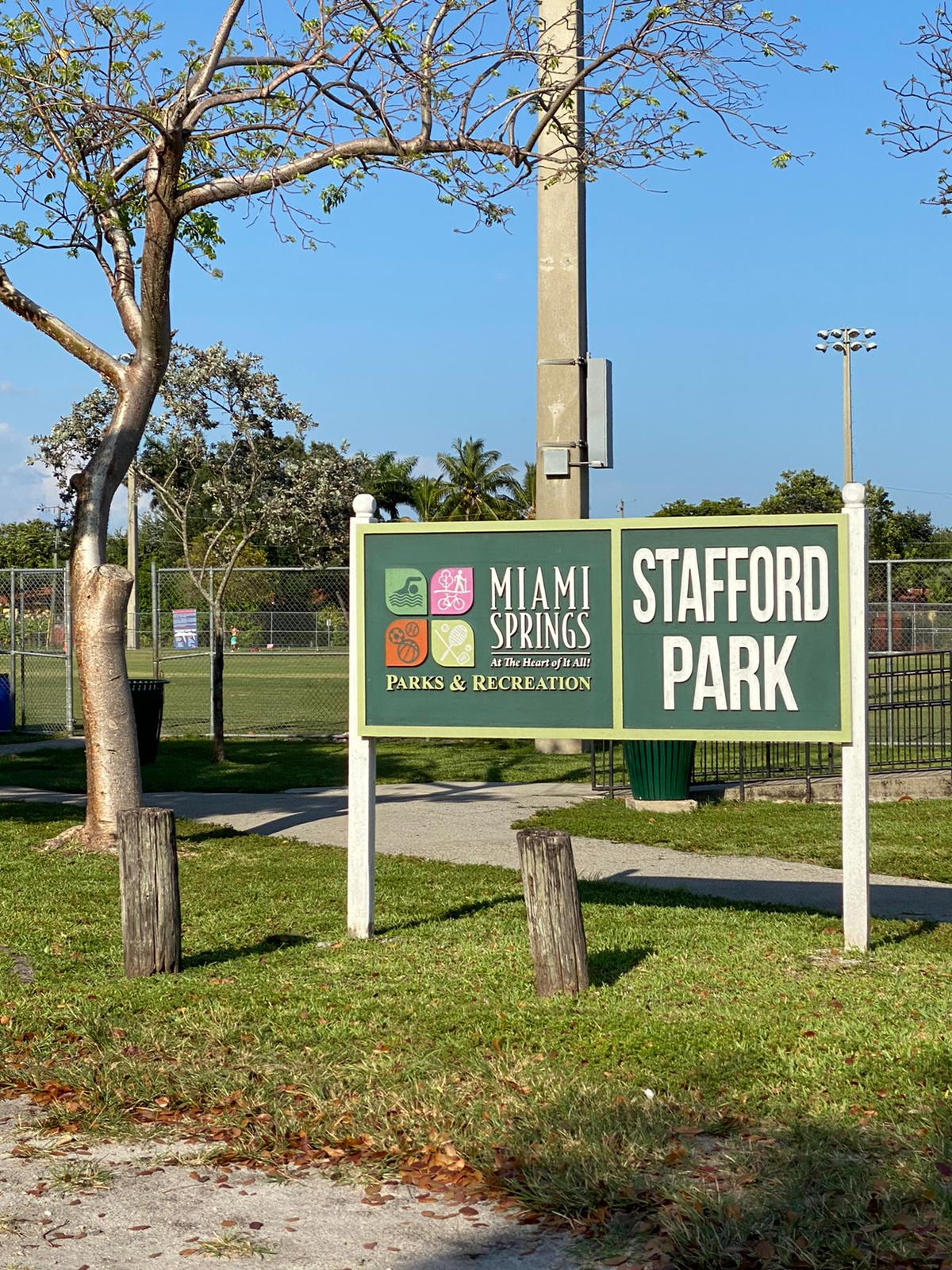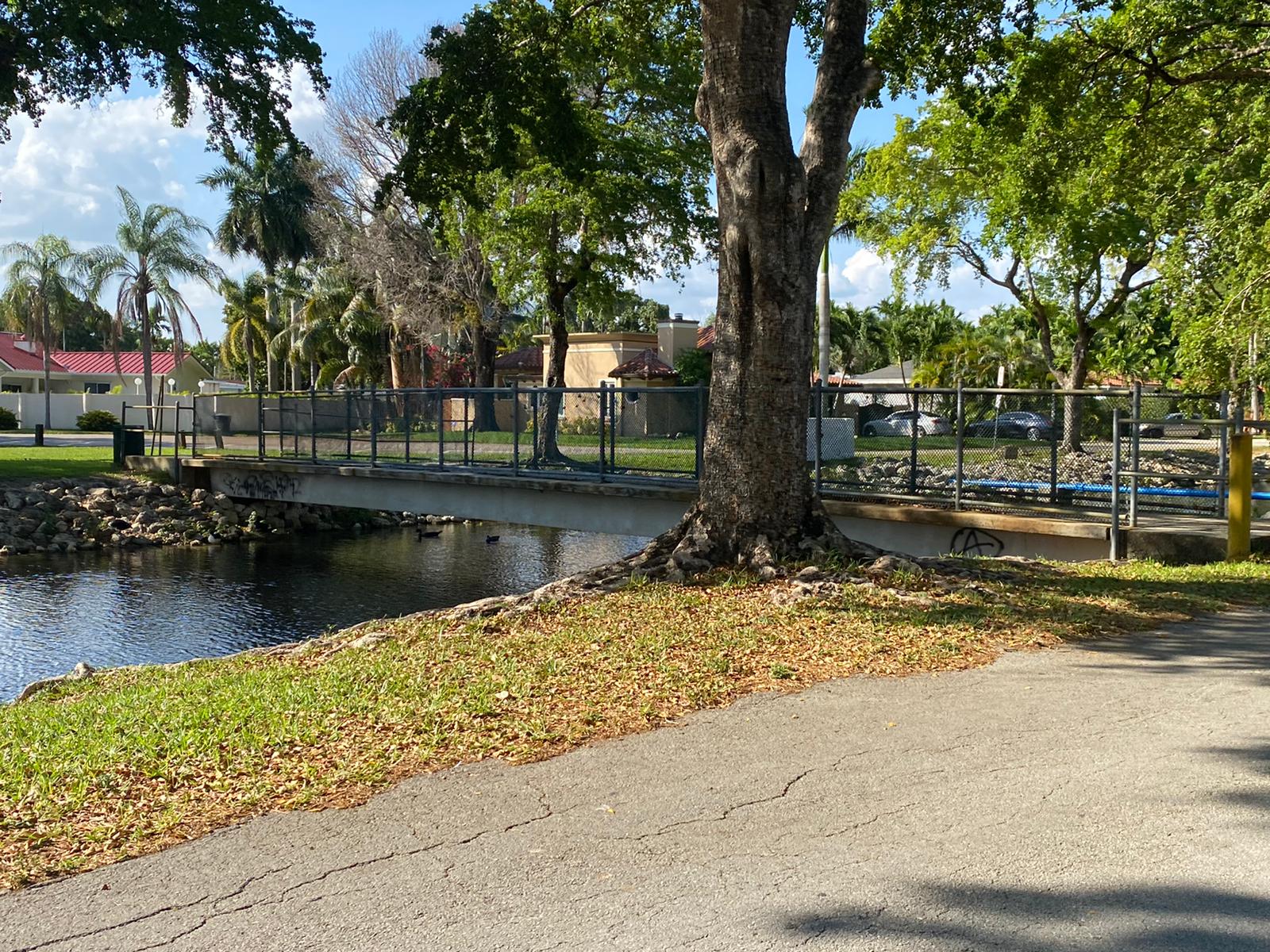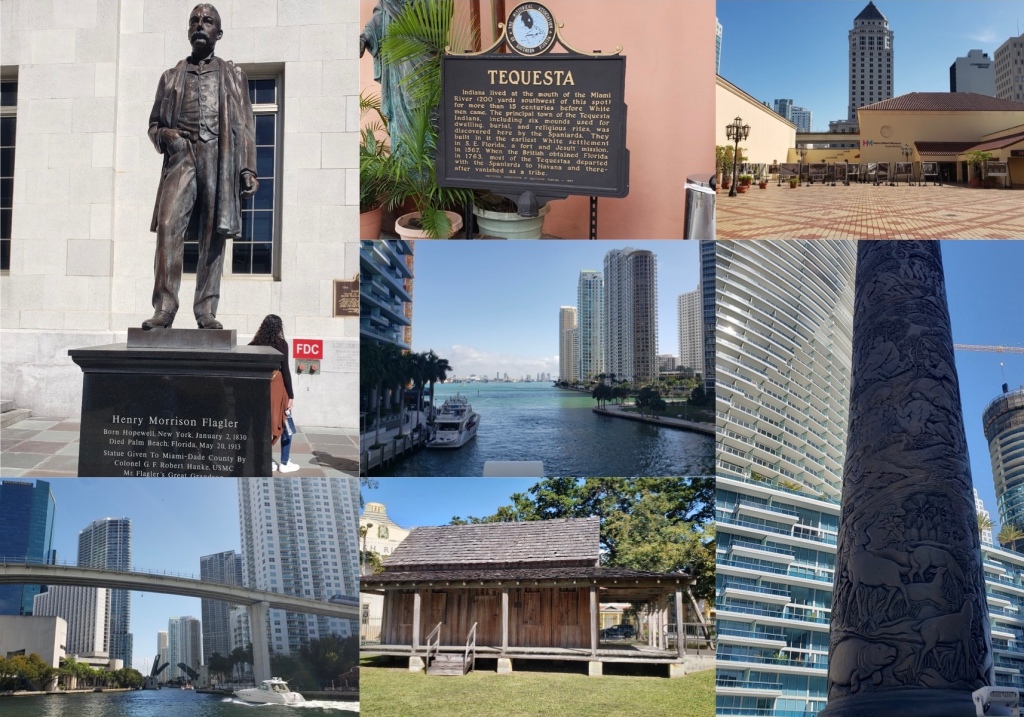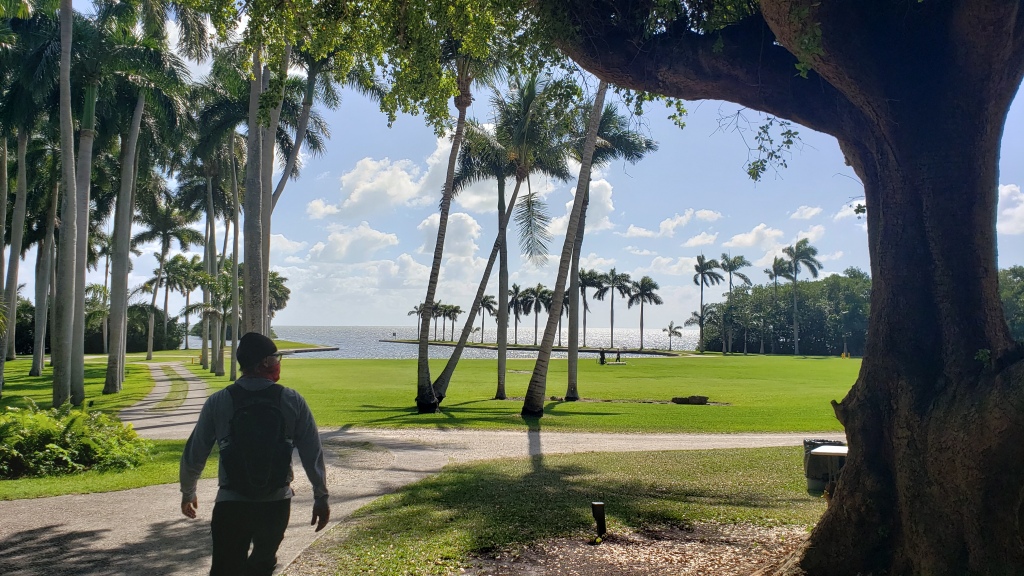Biography
Hello! My name is Hugo Marin, I am a junior finance major at Florida International University Honors College. Some of my hobbies include traveling, wakeboarding, and paintball. I love to explore, try new things, and am constantly on the lookout for cool restaurants. I am a Miami native, being born in Baptist Hospital and have lived in Kendall for all 21 years of my life. Being able to drive for the past five years I would say I know most of Miami like the back of my hand. I don’t know to much about the cities above the airport, which is why I was excited to do this project on Miami Springs.
Geography


Miami Springs is located directly North of Miami International Airport, West of Hialeah, East of Virginia Gardens, and South of Medley. While the city only has a total area of 3 square miles it truly makes the most with what it has. This city is packed with all types of business, restaurants, houses, 15 schools, 11 churches, 3 parks, and a golf course. The main roundabout known as the circle is where you can find most Miami Springs restaurants and businesses. The city features multiple runner and bike paths that go all around and throughout the city. The city is very clean and features lots of greenery.
Pictures taken of Miami Springs by Hugo Marin








History
Before Miami springs was developed land, it was bought by Glenn H. Curtiss and James Bright to start an aviation school. Miami Springs was originally known as “Country Club Estates”. When the residents of the estates voted and elected a mayor in 1926 it became the fifth municipality to be incorporated in Miami. The name Miami Springs came from the natural springs that used to be in that area, but due to construction of the canal the water pressure dropped and drained out the springs. The history of Springs is also tied to the history of the Miami Springs Golf and Country Club which predates the city. The biggest mansions can be found along the perimeter of the golf course including the home of Glenn Curtiss. His historic house is built in the Pueblo Revival architecture style which can be seen in other homes across the city. Another example of this style can be seen in the Country Club Hotel which later became Fair Havens Retirement Center. Miami Springs has been certified as a Tree City USA since 1993 and was recently named a “Preserve America City” in 2008 by first lady Laura Bush.
Demographics
According to the United States Census there is 13,809 people and 4,988 households in Miami Springs. The racial makeup of the city was 93.4% White, 1.6% African American, 0.2% Native American, 1.2% Asian, 1.9% from other races, and 1.7% from two or more races. Hispanic or Latino of any race were 71.2% of the population. The city has a spread-out age range with 23.2% under the age of 19, 5.6% from 20 to 24, 25.5% from 25 to 44, 29.8% from 45 to 64, and 16.3% who were 65 years of age or older. 84.3% of the population has obtained their high school degree and 35.4 has obtained a bachelors degree. The median income for households were $61,636, and the median income for a family was $75,575. Around 5.4% of families and 7.5% of the population were below the poverty line, including 8.7% of those under age 18 and 4.9% of those age 65 or over (Census.gov).

The photograph above is of Maria Pino, a resident I interviewed. Maria has been a resident of Miami Springs since May 1977. She recently moved to a new house in Springs because her old home was too big. Along with her husband she raised her five kids in her old house and lived in that home for 44 years. Her favorite thing about Springs is the small-town atmosphere the city has, how clean the city is, and the abundance of nature there is in the city. Her least favorite thing about Miami Springs is that the city has some extreme regulations and the how the real estate is being overpriced. During the interview she explained that there is a strong sense of community in the city and that practically everyone knows one another. Some of the big community events are parades for the holidays, children activities, festivals, fairs, and seasonal farmer markets. She very much loves her city which is why she chose to move just a couple streets down from her old home.
Landmarks
Glenn H. Curtiss Mansion and Gardens
Located at 500 Deer run the Curtis Mansion was home to the, “Father of Naval Aviation”, Glenn H Curtiss. Glenn raised his family in this home from its construction in 1925 until his death in 1930. The mansion was designed by Martin Luther Hampton, in the 1920s. He also designed the Miami Beach City Hall and the Congress Building in downtown Miami. The mansion was designed in the Pueblo Revival-style which set the tone for other homes and buildings across early Miami Springs. The mansion is now owned by the city and was revitalized to its original condition by a volunteer group that raised $4.5 million. This Mansion has been designated a National Register of Historic Places in (2001), and Designated Miami Springs Historic Site (1987). The mansion is now used for community events, tourism, and can be rented out for different occasions.
Clune – Stadnik Building
This building was constructed during the early days when Miami Springs was called Miami Country Club Estates. This building is in the Circle at 45 Curtiss Parkway. Since this building is 2 feet above the ground it was able to survive a flood caused by a hurricane that wiped out other building in that area. The building has also survived through fires, burglaries, and buy out attempt. The Clune building has gone from a civic center to a pharmacy to a diner and now it’s a Spanish restaurant. The building was designated a National Register of Historic Places (1985), and Designated Miami Springs Historic Site (1989).
Hotel Country Club (Fairhavens)
The Hotel Country Club is located on 201 Curtiss Parkway. This Country club was built in the Pueblo Revival-style and was built to attract potential homeowners to the Estates. During the financial crash Curtiss sold it to his friend Dr. John Harvey Kellogg. During his time owning the building Kellogg allowed members who weren’t white to stay in the hotel, this was very uncommon for the time because most hotels were segregated. In this building Kellogg also, raised his adoptive family, treated sick patients, and developed soy based food products. The building was turned into an elderly people home in 1959. It was designated Miami Springs Historic Site (1984).
Green
Miami Springs Golf and Country Club
Looking at any map you can see the golf course is easily the biggest green space in Springs. It Is located right in the center of Miami springs and is divided up by a street. This golf course features 18 holes and over 6775 yards of golf. Holes 1-9 are located on the east side of the road and holes 10-18 are located on the west. On the west side there is also a range where golfers can practice their drives. Miami Springs Golf and Country Club is known for being the only practice facility with nighttime access. The Golf and Country club was established in 1923 making it the oldest in golf course in Miami. This golf course hosts the Miami Open and is known to be the home course of legends like Sam Snead and Gene Sarazen.
Stafford Park
This park is located on the right side of Miami Springs. This park has two soccer fields, one baseball field, a softball field, and a playground for kids. This park was really packed when I went and seemed to be very popular because of all the sports games they had going on. The playground for the kids has a tent for shade as well as two gazebos they had for seating.
Miami Springs Dog Park
The dog park also featured 1 speedball field, 4 tee ball fields, and a playground for kids. The dog park had two sections one for large dogs and one for smaller dogs. There were plenty of ramps and obstacles for the dogs to play on as well as a fountain for them to drink from. There was also plenty of seating for the owners to watch their dogs while they play.
Transportation
For the most part everyone in Miami Springs drives around in cars. Since the city is so small though there are always plenty of pedestrians and bikers traveling from place to place. The city does a great job at providing bike and runner lanes. The city also provides a free shuttle that has 14 stops in Miami Springs and 3 stops outside the city in Hialeah. This shuttle operates from 7am- 6 pm and completes its trips every hour on the hour with a 15-minute variance.
Food
Harvest Moon Gourmet Bistro
Harvest Moon has been open since the 90s and is in The Circle. This family owned restaurant has an array of sandwiches, smoothies, soups, and salads. Harvest moon is known for being healthy and gets all their ingredients fresh every morning. The seating is like a café style and is outside in their garden patio. I tried their pita melt and its unlike any pita melt I have tried before; the pita melt looks like a pizza. I ordered their strawberry smoothie and Harvest Moon Melt (8.75) which has Chicken breast mixed with mayo, cinnamon, raisins, almonds apples on a piece of flat pita bread with melted cheddar cheese and comes with a garden salad. Overall, I would rate this restaurant an 8.5/10 because I loved their scenery, food was delicious, and it was very affordable.
JR’S Burger Gourmet Burgers
JR’s Burger was founded in 2010 and is in the Miami Springs Circle. The restaurant is very small with limited indoor seating and has very few employees. Don’t let that fool you though because this hole in the wall burger joint is now easily one of my favorite burger places in Miami. They have won seven national awards for their burgers. I ordered their award-winning Mac and Cheese balls that comes with Pico de Gallo and Chipotle Mayo. I also ordered their award-winning Burger and The Beast which is their hand pressed Angus Beef, cooked medium well, on a toasted corn dusted bun, with their pink sauce, grilled onions, and American cheese. The food was impeccable and so savory I’m rating this restaurant a 9/10.
Cozy Corner
Cozy Corner is a staple restaurant of the Miami Springs circle and has been there for over 20 years for years. Cozy Corner is a Retro-style mom-and-pop diner dishing up breakfast favorites, plus homestyle comfort food. Although I wasn’t able to eat here the atmosphere felt very comforting and authentic, truly a blast to the past. My tour guide of Springs rated this restaurant an 8.5/10. She described this place as your classic American diner and recommends over any of the chains like IHOP, Dennys, or waffle house
Businesses
Springs Athletics
Located in 60 Westward Dr, Miami Springs, FL 33166 Springs Athletics is a small affordable gym for the local people. This gym features lots of catechistic equipment and weights. They primarily focus on group workouts and describe themselves as more of a fitness club. You can see them do group runs around Springs or group workouts in their gym. The team routinely trains at the beach and other outdoors locations. They have the spartan as their mascot on their logo.
Manny’s Cigars
Located in 261 westward drive suite 111 Miami Springs, FL Mannys cigars is a small shop that offers premium cigars. They describe themselves as a premium cigar shop and smokers lounge dedicated to excellent customer service and the best products in the industry at their best quality! This small shop is very popular with the Cubans in springs. They have moderate prices on their cigars.
EMPIRE BOUTIQUE
Empire boutique is in 46 Westward Drive, Miami Springs Florida 33166. This small shop offers custom streetwear and vintage clothing. They routinely do new drops of clothing and accessories. One of their most popular tees is Miami runs on Cafecito. Some of the accessories they have are air pod cases, umbrellas, and candles. They moderately price their clothing with vintage clothing running up to $150.
Summary
Overall Miami Springs is a small city with lots of rich history. The small size of the city gives the city character though because it strengthens the community bond. Almost everyone in Miami Springs knows one another. My guide for this also showed me that Springs has everything you possibly need like doctor, dentist, gym, auto repair, etc. You technically don’t need to leave the 3-mile square area. In the city’s Circle you truly feel like you’re in an old time American city. The only thing that I would say doesn’t work is that since they are so focused on preserving the city, I don’t think any new development is going to happen here especially since there isn’t any more space.
Work Cited
“History of Miami Springs – MiamiSprings.com: Miami Springs News and Events.” MiamiSprings.com, 22 Jan. 2020, new.miamisprings.com/miami-springs-history/.
“History.” Miami Springs Golf & Country Club, miamispringsgolfcourse.com/history/.
“Hotel Country Club (Fairhavens).” City of Miami Springs Florida Official Website, http://www.miamisprings-fl.gov/community/hotel-country-club-fairhavens.
https://www.miamiherald.com/news/local/community/miami-dade/article239198703.html













